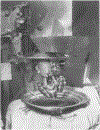The Use of Focused Ultrasound Ablation for Movement Disorders
- PMID: 39322354
- PMCID: PMC12049669
- DOI: 10.1016/j.mric.2024.04.003
The Use of Focused Ultrasound Ablation for Movement Disorders
Abstract
Focused ultrasound ablation achieves selective thermal lesioning of the thalamic and basal ganglia targets using real-time MR imaging guidance. It is US Food and Drug Administration-approved to treat essential tremor and Parkinson's disease tremor, fluctuations, and dyskinesias. Patients often seek focused ultrasound treatment because symptom relief is immediate, and hardware implantation is not required. This review summarizes the current and potential future application of focused ultrasound ablation to treat movement disorders. We also discuss the ongoing research optimizing the technique of focused ultrasound ablation to improve long-term efficacy and minimize the risk of side effects.
Keywords: Ablation; Essential tremor; Focused ultrasound; Pallidotomy; Parkinson’s disease; Thalamotomy.
Copyright © 2024 Elsevier Inc. All rights reserved.
Conflict of interest statement
Disclosures Dr V. Krishna is funded by NIH, United States. All other authors do not have commercial or financial conflicts of interest, and there are no funding sources for all authors.
Figures





References
-
- Fry WJ, Mosberg WH Jr, Barnard JW, et al. Production of focal destructive lesions in the central nervous system with ultrasound. J Neurosurg 1954;11(5):471–8. - PubMed
-
- Meyers R, Fry WJ, Fry FJ, et al. Early experiences with ultrasonic irradiation of the pallidofugal and nigral complexes in hyperkinetic and hypertonic disorders. J Neurosurg 1959;16(1):32–54. - PubMed
-
- Haubenberger D, Hallett M. Essential Tremor. N Engl J Med 2018;378(19):1802–10. - PubMed
-
- Louis ED, Barnes L, Albert SM, et al. Correlates of functional disability in essential tremor. Mov Disord 2001;16(5):914–20. - PubMed
-
- Woods SP, Scott JC, Fields JA, et al. Executive dysfunction and neuropsychiatric symptoms predict lower health status in essential tremor. Cognit Behav Neurol 2008;21(1):28–33. - PubMed
Publication types
MeSH terms
Grants and funding
LinkOut - more resources
Full Text Sources
Medical

